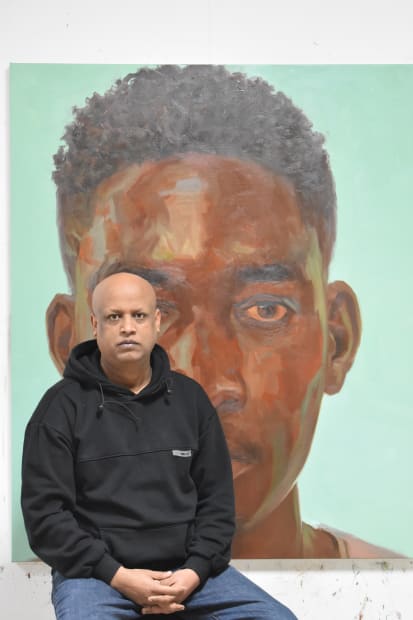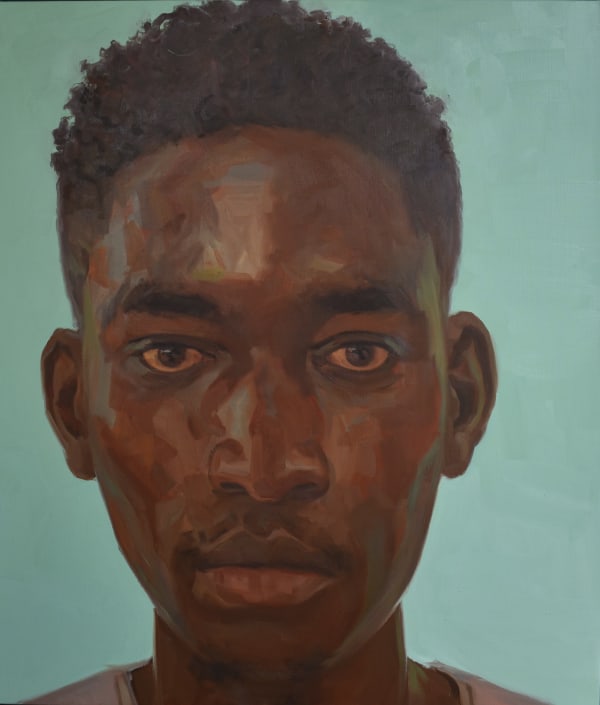-
-

-
Group exhibitions include (Upcoming) Double ID: CCH Pounder-Koné Collection, The Charles H. Wright Museum of African American History, Detroit, MI (2024) LOST GIRLS, Flowers Gallery, London, UK (2023): Untitled Miami Beach Art Fair, Miami, USA (2022); The Unseen, Whitechapel Gallery, London (2022); Unsettled, Duende Art Projects, Antwerp, Belgium (2022);Young Curators: Melketenner / Milk Teeth, Nitja Centre of Contemporary Art, Lillehammer, Norway (2022); Facing the Sun, Kristin Hjellegjerde Gallery, Schloss Görne, Germany (2021); 1-54 Contemporary African Art Fair, Somerset House, London (2021); LeLa gallery Addis Ababa (2018); Lela art gallery, Addis abeba (2016); laphto art gallery Addis Ababa (2015); LeLa gallery, Addis Ababa (2014); Atelier Fine Art Gallery, Addis Ababa (2012); Studio am Scholes Berlin (2008); Biblotheek Permeke, Antwerp (2007); Biblotheek Durne, Antwerp (2005).
Highlights and Collections
Tewodros Hagos's work was featured in The Museum of Modern Art in Warsaw's publication "Was Socialist Realism Global?"; with an essay by art historian Kate Cowcher, published by The University of Chicago Press. In 2021 Tewodros Hagos received the second prize award from the Ethiopian Ministry of Culture following his award in 2017 of the prestigious “Chevalier of France’s Order of Arts and Letters” from the Culture and Communication Minister of France. His works can be found in many public and private collections worldwide including the Kistefos Museum, Oslo (Norway); Laurent Dumas, Farida et Henri Seydoux Collection (France); the Bunker Artspace Museum (USA); Arthur Lewis Collection (USA); Easton Capital Collection (USA); Birchby Collection (USA); W Art Foundation and the C.C.H. Pounder Collection (USA); Naimah/IIham Foundation, (UK/Malaysia). -

-
Enigma of the Gaze 4 is the only work in the series in which the subject does not meet the viewer – or the artist’s – gaze. The painting depicts a beautiful young woman seemingly lost in thought or memory, her eyes fixed beyond the confines of the canvas. As in all of the paintings, the contextual background detail has been stripped away so as to focus our attention on the individual, her expression and clothing the only clues into her life story. ‘I want to create points of connection and commonality,’ explains Hagos. ‘So that people can see themselves in the other.’While many of the portraits project a sense of vulnerability or even sadness, Hagos’ intention is not to expose his subjects but to elevate them. They are not, as was traditionally the case with the subjects of portraiture, patrons or nobles; they are ordinary people who are just as complex and deserving of our attention. All of the figures, especially the women, appear powerful, radiant and mysterious, their features accentuated by areas of luminosity almost as if they were standing in a spotlight. We may never be able to know another person fully, the artist seems to suggest, but we all deserve to be treated with sensitivity and respect.
-
-
Tewodros Hagos: The Enigma of the Gaze
Past viewing_room















